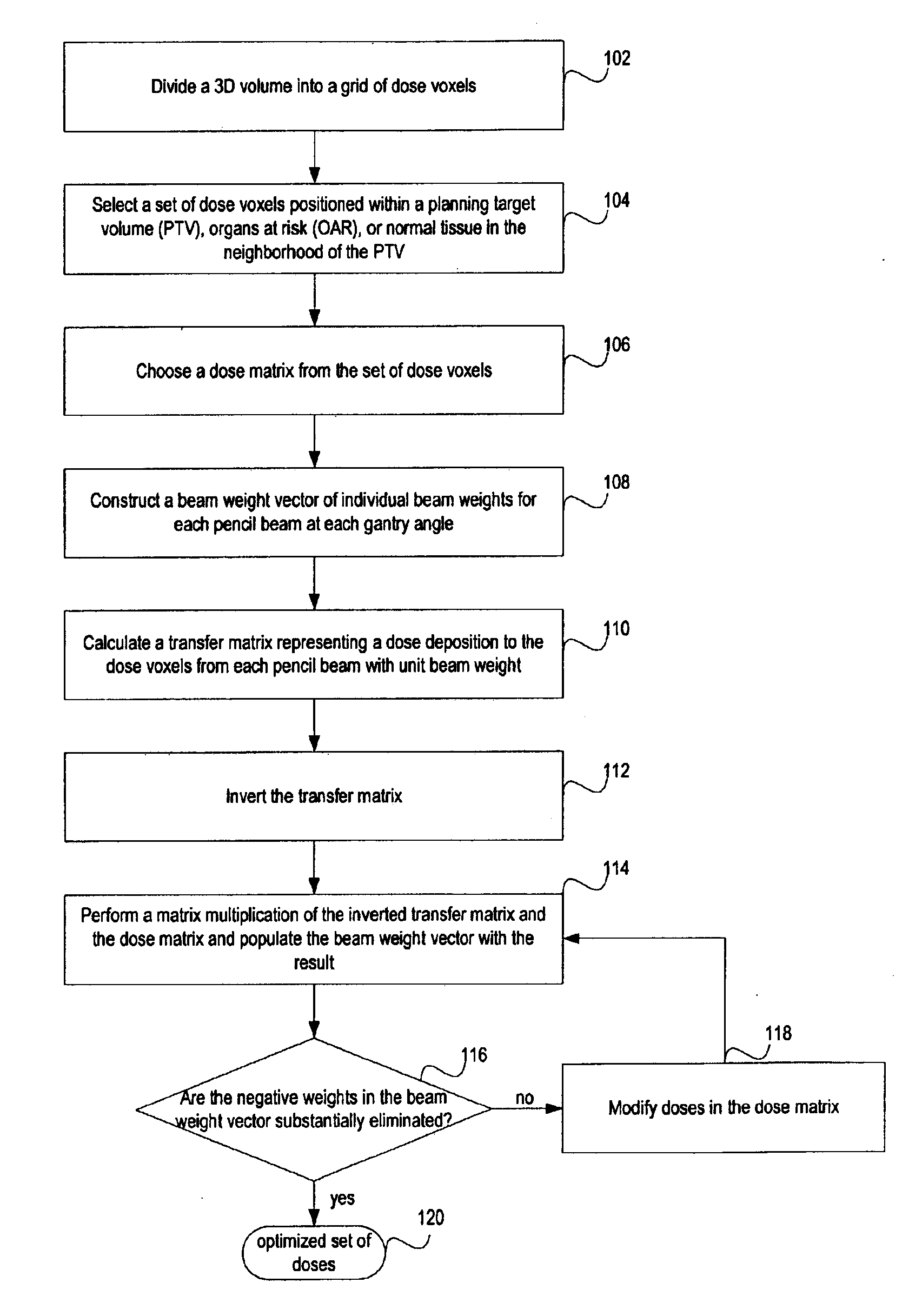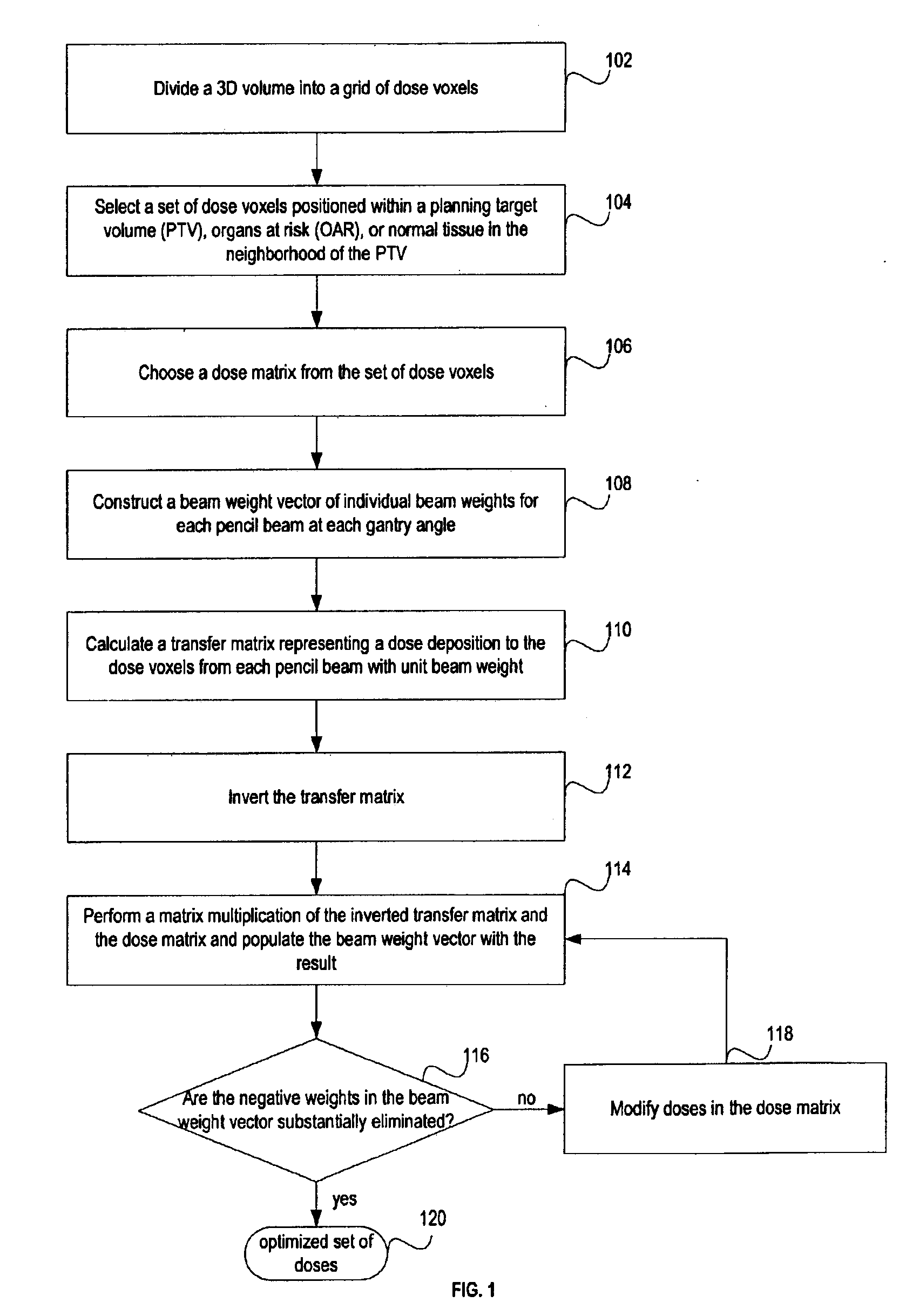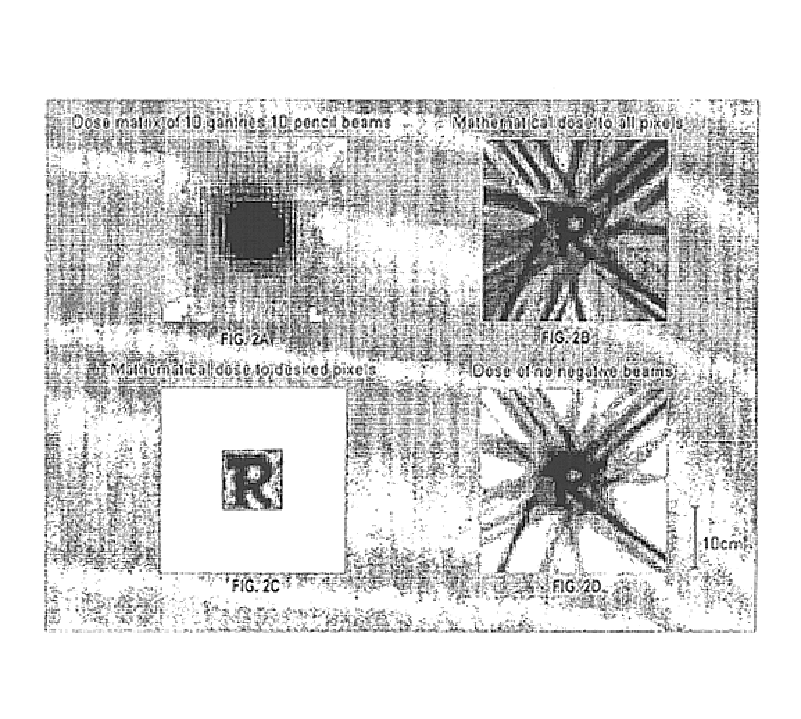Intensity modulated radiotherapy inverse planning algorithm
- Summary
- Abstract
- Description
- Claims
- Application Information
AI Technical Summary
Benefits of technology
Problems solved by technology
Method used
Image
Examples
Embodiment Construction
[0031]A preferred embodiment of the invention is discussed in detail below. While specific exemplary embodiments are discussed, it should be understood that this is done for illustration purposes only. A person skilled in the relevant art will recognize that other components and configurations can be used without parting from the spirit and scope of the invention.
[0032]The IMRT optimization algorithm of the present invention is based on the direct inverse operation of linear algebra. The objective function to be optimized is the quadratic summation of negative beam weights. Instead of iterating over the beam weights, as other optimization algorithms do, the method of the present invention iterates the doses in a dose matrix within a given range. Minimizing the objective function effectively searches for the physically achievable beams.
[0033]A three dimensional (3D) volume of the target is divided into a grid of dose voxels, where each dose voxel receives a dose of radiation from one...
PUM
 Login to View More
Login to View More Abstract
Description
Claims
Application Information
 Login to View More
Login to View More - R&D
- Intellectual Property
- Life Sciences
- Materials
- Tech Scout
- Unparalleled Data Quality
- Higher Quality Content
- 60% Fewer Hallucinations
Browse by: Latest US Patents, China's latest patents, Technical Efficacy Thesaurus, Application Domain, Technology Topic, Popular Technical Reports.
© 2025 PatSnap. All rights reserved.Legal|Privacy policy|Modern Slavery Act Transparency Statement|Sitemap|About US| Contact US: help@patsnap.com



